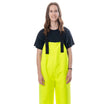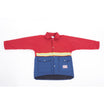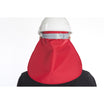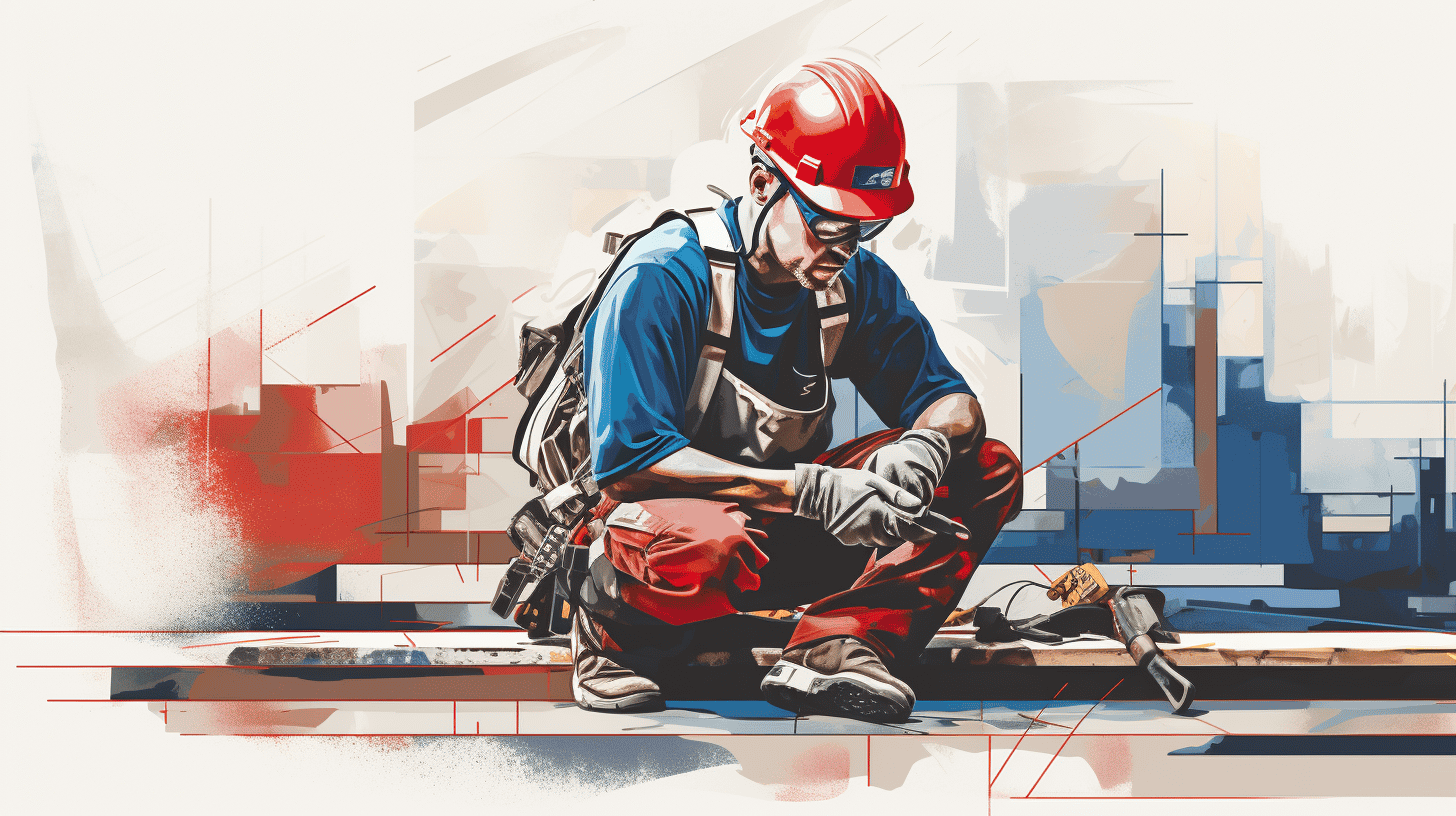Let's plunge into the world of construction work, a realm of shuffling feet, towering steel structures, and persistent background noise. Amidst all these dynamic elements, there's one aspect that often gets overlooked – the humble construction boot. Painted with dust and resilient to wear and tear, these boots may not be glamorous, but they play a vital role in ensuring the well-being and safety of workers traversing precarious landscapes. This article will explore why anti-slip boots are indispensable in construction work, from understanding the hazards present to maintaining these valuable foot soldiers for optimal performance. Let's march on and unearth the significance of these sturdy companions.
Understanding Slip Hazards in Construction
Construction sites are a beehive of activities, always buzzing with workers, equipment, and materials. Among the several hazards these workers face, one that's often overlooked but potentially fatal is the risk of slips and falls. Current safety guidelines aim to mitigate these risks, but to fully grasp the necessity of these precautions, we need to delve into the various elements contributing to slip hazards in construction.
Working Conditions
The first significant factor to consider is the working conditions. Professional construction sites are inherently messy and dynamic environments. Workers need to navigate through and around objects, often carrying heavy materials or tools. This not only limits their vision but also hinders their mobility, increasing the chances of slipping.
Here are some factors of working conditions contributing to slip hazards:
- Uneven terrain: Construction sites rarely have flat, even ground. This can cause workers to misstep, leading to injuries.
- Poor lighting: If a site is not adequately lit, workers may not see potential slip hazards.
- Lack of signage: Signage indicating wet floors or loose debris can significantly reduce slip incidents.
Materials and Debris
Construction materials and debris also play a considerable role in creating slip hazards. Spoils like rubble, spare parts, or discarded materials can turn into a slipping hazard if not properly managed. Again, the risk increases when these materials become wet, either due to spills or weather, making surfaces slippery.
Remember these crucial points on materials and debris:
- Construction sites should have designated waste disposal areas.
- Regular site clean-up is essential to reduce slipping hazards.
- Proper storage and handling of construction materials is crucial.
Weather Conditions
Outdoor construction work is significantly affected by weather conditions. Rain, snow, or even morning dew can create slippery surfaces, especially on metal or wooden materials. Similarly, weather-induced wear and tear can cause surfaces to become uneven, leading to slip hazards.
Here's what to remember about weather conditions:
- Weather forecasts should be monitored regularly to prepare for undesirable conditions.
- Sites should be equipped with materials to manage the effects of weather, such as slip-resistant mats or covers.
- In extreme weather conditions, work should be postponed until safety is assured.
Precautions and awareness can significantly lower slip hazards in construction sites. However, another effective way to maintain a safe working environment is by understanding and implementing safety-rated gear. Further information on this can be found in the article "Understanding Safety Ratings." Despite the challenges, remembering these factors and adhering strictly to safety protocols can ensure a safer workspace, promoting efficiency and productivity among the workers. After all, the surest route to successful projects is always paved with safety!
Importance of Footwear in Minimizing Slip-and-Fall Accidents
When it comes to occupational safety, every detail matters. Protective eyewear, hard hats, gloves, and high-visibility clothing immediately spring to mind. What about your feet, though? The right footwear plays a vital role in warding off workplace slip-and-fall accidents. This is crucial in industries with wet or slippery work conditions.
Reducing Accidents
Imagine walking on a newly washed floor wearing regular shoes. Chances are, you've had a few near misses. Now, magnify that risk several times over by the demands of a busy worksite - the potential for a disastrous slip-and-fall is clear. A pair of reliable, slip-resistant shoes can significantly minimize these risks. Moreover, these shoes usually provide additional protection like steel-toes, minimizing the likelihood of foot injuries.
- Quality footwear can help to:
- Reduce the number of workplace accidents.
- Limit the potential for serious injury.
- Create safer working environments for all staff.
When considering footwear as part of your Work Gear Essentials, remember that it's an investment in safety.
Enhancing Workers' Productivity
Apart from safeguarding against accidents, proper footwear also contributes to overall productivity. Comfortable shoes allow for more efficient movement and longer hours on your feet without discomfort, improving concentration and work output.
"Comfortable foot gear is a crucial but often overlooked factor in a worker's efficiency."
Consider the long-term effects on your workforce's health. Constantly wearing ill-fitting or substandard shoes can lead to issues like musculoskeletal disorders, chronic pain, and decreased productivity in the long run.
Legal Compliance
Investing in the right footwear isn't just about safety or productivity; it's also about legal compliance. Many regions have stringent occupational safety and health regulations in place, mandating adequate protective gear, including footwear, for certain industries.
Failing to provide appropriate work shoes can lead to severe penalties, legal complications, and even business closure. Therefore, it is essential to understand your specific industry's requirements and provide suitable footwear to your workforce.
In the grand scheme of workplace safety, the correct footwear can often be an unsung hero. It plays a pivotal role in minimizing slip-and-fall accidents, enhancing employees' productivity, and keeping your operations legally compliant. Don't let it be an afterthought; make it a priority. The benefits will undoubtedly be worth the investment.
Benefits of Anti-Slip Boots in Construction
Safety in the construction field is paramount and it's important to equip oneself with the best gear possible. Construction experts all over the world underscore the importance of proper footwear, and in particular, anti-slip boots. Apart from offering robust protection, these boots provide a bevvy of benefits that can make a world of a difference in the day-to-day working conditions and overall performance.
Increased Grip and Traction
One of the most significant benefits of anti-slip boots is their ability to provide ample grip and traction. Most construction sites exhibit a variety of treacherous terrains, whether it's muddy soil or a polished concrete floor. With these boots, workers can rely on an enhanced grip that definitively lowers the risk of falling and slipping accidents.
Let's consider some other crucial benefits:
- Minimized Accidents: Whether it's a soppy surface after a rainfall or an accidentally spilled oil can, Anti-slip boots substantially reduce on-site accidents, fostering a safer work environment.
- Better Balance: The superior grip offered by these boots helps maintain better balance when negotiating uneven terrains or balancing on narrow beams, which is often a necessity in construction sites.
Comfort and Protection
Anti-slip boots are not just about performance, but they also pay heed to the comfort of the wearer. They often come with cushioned insoles, breathable material, and ergonomic design that make long hours of wear bearable. Just like the rest of the high-quality rain gear, comfort and functionality seamlessly blend in these type of boots.
Furthermore, these boots also provide formidable protection against falling objects, sharp debris, and hazardous chemicals. An essential component of safety gear, these boots provide not just a sturdy tread but also a robust defence for a construction worker's feet.
Durability
An often-ignored perk of anti-slip boots is their immense longevity and tenacity. These boots are crafted from durable, weather-resistant materials designed to withstand the harsh conditions of construction sites. This ensures an extended lifespan, thereby offering better value in the long run.
In a nutshell, anti-slip boots deliver a high level of safety, comfort, and resilience that is pivotal to the demands of construction workers' challenging yet rewarding job. From better grip and balance to increased protection and reduced fatigue, they are an indispensable part of a construction worker’s wardrobe.
Choosing the Right Anti-Slip Boots for Construction Work
There's no denying that, in any work environment, safety is paramount. This statement holds particularly true in construction zones where the potential risks can be exponentially high. In such areas, in addition to the essential gear for safety, workers must invest in quality anti-slip boots designed specifically for their duties. Here, we will guide you on choosing the perfect pair.
Considering the Work Environment
First, assessing your work environment before making a purchase is crucial. Different environments have unique requirements, directly influencing the type of boot you need. Here are a few environments to contemplate:
- Outdoor Construction sites: These areas are often muddy. Therefore, rough and tough boots with deep treads are necessary to navigate these arduous conditions.
- Indoor sites: Here, especially when working on slippery surfaces like polished concrete, anti-slip tools become particularly imperative.
- Rainy climate zones: For regions experiencing frequent rainfall, your boots need to be not just anti-slip but also waterproof.
Assessing the Boot's Slip Resistance
After the work environment, slip resistance takes center stage. The better the anti-slip feature, the safer you will be on your worksite. Key factors to consider here include:
- Tread pattern: A boot with circular patterns may provide excellent traction, but if the grooves are shallow, they might fill up with grime or dirt and lose their anti-slip potential.
- Rubber sole: Boots with rubber soles provide excellent traction on several surfaces, especially wet ones.
Looking for Additional Safety Features
Finally, after slip resistance, it's time to look for additional safety features. Some of the critical attributes to watch out for include:
- Steel toe caps: These provide superior protection against falling objects.
- Puncture resistance: Boots with this feature offer additional protection against sharp objects like nails.
Remember, prioritizing safety over fashion and design is paramount in this case. While an attractive pair of anti-slip boots might be aesthetically pleasing, it's their practicality and functionality that truly counts on a construction site. With these factors at your fingertips, you are well on your way to choosing the perfect pair of anti-slip boots for construction work.
Maintaining Your Anti-Slip Boots
Being prepared for every weather condition is crucial, especially for those in demanding fields such as construction. That's why investing in high-quality footwear like anti-slip boots is essential. But, maintaining them is just as important as making that initial investment. Let's delve into three key tips to preserve your anti-slip boots and safeguard your footing: Cleaning and Drying, Regular Inspection, and Proper Storage.
Cleaning and Drying
Don't underestimate the power of regular cleaning! After a hard day's labor, your boots may be muddied, wet, or filled with debris. The accumulation of gunk can deteriorate the boot's material, reduce its anti-slip quality, and even result in odors, none of which are desirable. But fret not, cleaning your boots doesn't have to be laborious! Here's a simple routine:
- Start by knocking off any solid dirt or mud clumps.
- Once that's done, use a soft brush and mild soap to gently scrub the boots.
- Rinse thoroughly and blot excess water with a towel.
- Allow the boots to air dry - heat can damage the materials and reduce their lifespan.
Regular Inspection
Vigilant inspection of your boots can help pinpoint any wear-and-tear before they morph into bigger issues. Look out for cuts, holes, or cracks in the boot material and soles. If the anti-slip tread on the soles looks worn out, it's crucial to address it quickly because a reduced anti-slip capacity can put you at risk of slipping. Incorporating the role of your trusted rain gear in your routine checks can further ensure your safety and gear longevity.
Proper Storage
Believe it or not, storing your boots right can significantly extend their service time. After cleaning and drying, make sure to stow away your boots in a cool and dry place. Avoid direct sunlight or hot areas, as these can cause the material to crack or fade. It's also best to store them upright using a boot rack if possible to maintain their shape.
By following these tips, you can ensure your anti-slip boots remain effective and durable, keeping you safely on your feet, no matter the weather or conditions!
Conclusion
Making the right choice for safety in construction work is necessary, and choosing the apt footwear plays a pivotal role in this. Anti-slip boots contribute to not just reducing slip-and-fall incidents, but also enhance worker productivity and ensure adherence to safety regulations.
While selecting anti-slip boots, take into consideration the work environment and the boot's slip resistance. Additionally, look out for extra safety features that could be highly beneficial.
Maintaining your boots in top-notch condition by regular cleaning, inspection, and proper storage extends their durability, thereby assuring better protection.
Remember, prevention is better than cure. Why not go a step further in your safety measures? Along with your robust anti-slip boots, consider pairing them with Rain Gear Pro's uniquely engineered chainsaw safety pants, known for their top-grade materials and impressive durability, for a complete safety package at the construction site.
Ensuring safety through dependable work gear doesn't just ensure physical well-being but also fosters a more focused, confident, and productive work environment. Make the smart choice today for a secure tomorrow.
Frequently Asked Questions
-
What are anti-slip boots?
Anti-slip boots are specially designed footwear that provides enhanced grip and traction on slippery surfaces. They are crucial for construction work as they help prevent slips, trips, and falls, reducing the risk of accidents and injuries.
-
Why are anti-slip boots important for construction work?
Construction sites often involve working in challenging environments with wet, oily, or uneven surfaces. Anti-slip boots provide workers with stability and grip, helping them maintain balance, even in hazardous conditions.
-
Do anti-slip boots comply with safety regulations?
Yes, reputable brands of anti-slip boots comply with safety regulations and standards. These boots are designed with specific features like slip-resistant outsoles, durable materials, and reinforced toe caps to ensure worker safety on construction sites.
-
Can anti-slip boots reduce workplace accidents?
Yes, wearing anti-slip boots can significantly reduce workplace accidents in the construction industry. Slip and fall accidents are common in construction, and using proper footwear with enhanced slip resistance can help prevent such incidents and keep workers safe.
-
What features should I look for in anti-slip boots?
When choosing anti-slip boots for construction work, look for features like a slip-resistant outsole, water and oil resistance, ankle support, cushioning for comfort, and durable construction. It's also essential to select boots that fit well and provide adequate arch support.





















Leave a comment
This site is protected by hCaptcha and the hCaptcha Privacy Policy and Terms of Service apply.